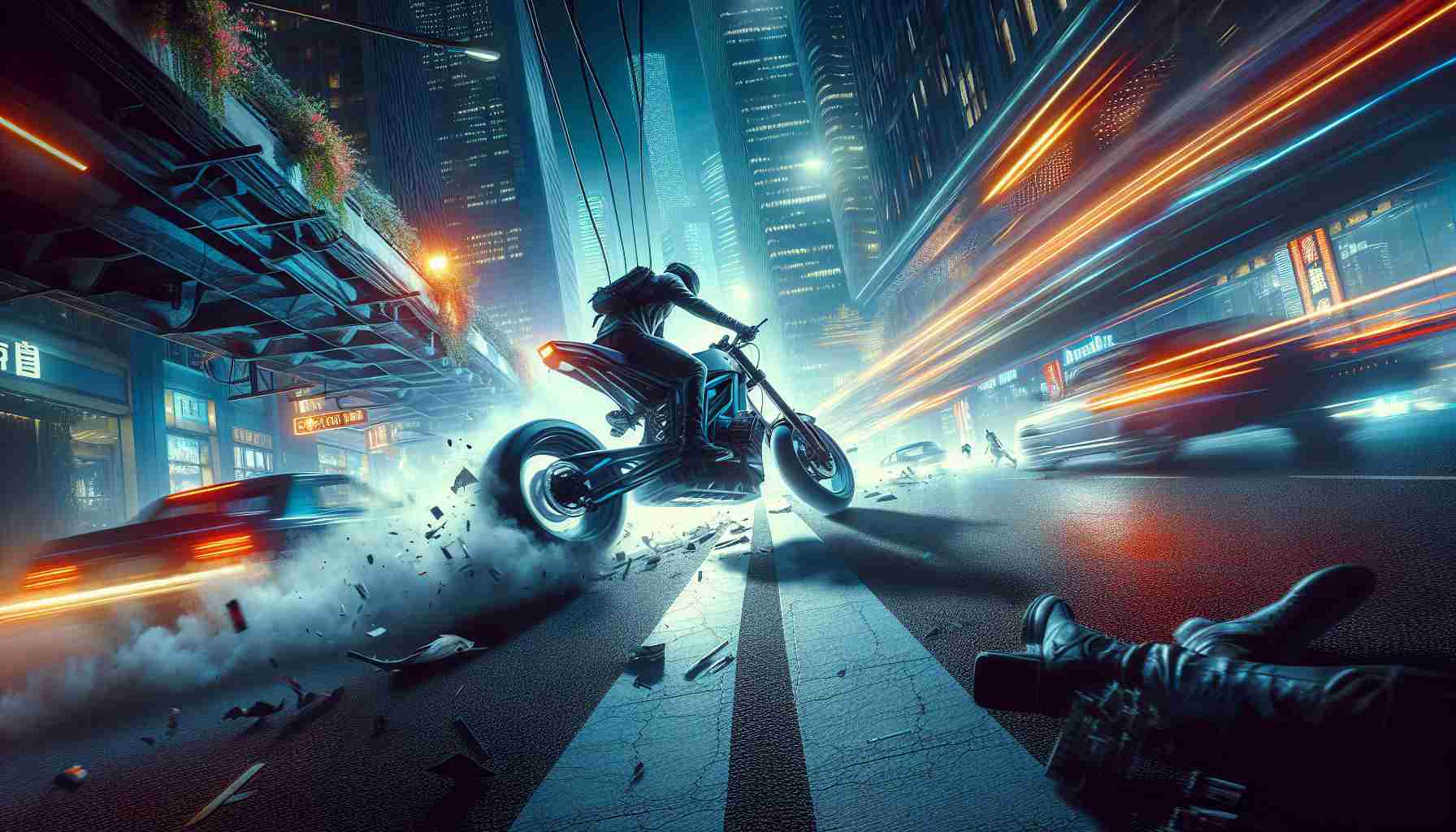- The incident highlights the tension between public safety and police intervention tactics.
- Officer Tim Bradshaw defended his actions as necessary for protecting the community amidst a high-speed chase.
- McGarry, the e-bike rider, was 17 with no license and a significant criminal record, raising concerns about youth and reckless behavior.
- The chase ended with a collision resulting in McGarry sustaining a serious injury, sparking debate over police methods.
- The ongoing trial emphasizes the challenges law enforcement faces in addressing increasing incidents involving e-bikes in urban areas.
In a dramatic courtroom revelation, a police officer defended his controversial decision to collide with an e-bike, claiming it was a necessary tactic to protect the public and those involved. On that fateful day in Bognor Regis, young riders Mason McGarry, who was just 17, and his accomplice Dominic Mizzi were racing through the streets, risking not just their own safety but that of others.
Officer Tim Bradshaw found himself in a high-stakes chase when the duo sped past him on the pavement, seemingly daring him to intervene. He recounted the moment of “tactical contact,” where he had to act quickly, driving at approximately 30mph in a bid to halt their reckless behavior. Despite the ensuing collision resulting in McGarry suffering a fractured tibia that required surgery, Officer Bradshaw insisted that his maneuver wasn’t forceful—merely a “light contact” meant to deter.
In court, it was revealed that McGarry had no license and had racked up over 40 previous convictions. Mizzi, now 22, wasn’t far behind with his own history of violent offenses. As the trial unfolds, questions linger about the balance between public safety and police tactics, leaving us to ponder the thin line officers navigate every day.
The critical takeaway? This incident sheds light on the complexities of handling reckless behavior in a world where e-bikes are pushing the limits of urban safety.
Should Police Tactics Include Collisions with E-Bikes? Unpacking Controversial Decisions
Understanding Police Tactics in High-Speed Chases Involving E-Bikes
In recent years, the rise of e-bikes has created new challenges for law enforcement and urban safety. This situation in Bognor Regis, where a police officer made the contentious decision to collide with an e-bike during a pursuit, is a striking example of the ongoing debate surrounding police tactics in high-speed chases.
How Police Tactics Affect Public Safety
Police officers often find themselves in split-second situations where they must decide between public safety and the potential harm caused by their actions. The incident involving Officer Tim Bradshaw not only raises questions about the appropriateness of physical intervention but also about the implications for community trust in law enforcement.
1. Pros and Cons of Forceful Police Tactics
– Pros:
– Immediate control of reckless behavior.
– Potentially reduced injury to innocent bystanders.
– Dissuasion of future reckless actions if consequences are visible.
– Cons:
– Risk of serious injury to suspects, as seen with McGarry’s fractured tibia.
– Legal implications and public outcry regarding police overreach.
– Potential for escalation of situations instead of resolution.
2. Market Forecasts for E-Bike Regulations
The increase in e-bike use is expected to drive government regulations aimed at improving safety. Expect a rise in legislation focusing on licensing, speed limits, and mandatory safety gear in urban environments.
3. Use Cases for Tactical Pursuits
– Urban Environments: As e-bikes become more common, police must develop specific protocols for pursuit tactics that consider minimal harm to suspects while ensuring public safety.
– Training Programs: Enhanced training programs may be necessary to prepare officers for the unique dynamics of e-bike chases, emphasizing de-escalation tactics and alternative methods of stopping offenses.
Key Questions Related to the Incident
1. What are the legal implications of police using tactical contact in chase scenarios?
Tactical contact can lead to investigations regarding the legality and appropriateness of force used by authorities. Officers may face scrutiny if injury is sustained, as it could be deemed excessive force depending on the circumstances.
2. How are e-bikes being regulated in different jurisdictions?
There is significant variation in e-bike regulations across cities and countries, with some enacting strict limits on speed and where e-bikes can be used. A growing trend is the push for mandatory insurance and registration that would affect how police handle violations.
3. What are the psychological effects of high-speed chases on suspects?
The psychological impact can be profound, as high-speed chases often induce fear and anxiety, which could lead to reckless behavior. Understanding these dynamics is crucial for developing better policing strategies.
Insights into Modern Policing and E-Bike Behavior
As e-bikes gain popularity, law enforcement must adapt to the nuances of these vehicles. Incidents like the one in Bognor Regis serve as critical case studies illustrating the need for defined policies and procedural guidelines concerning police interactions with cyclists.
Looking Ahead: Innovations in Police-E-Bike Interactions
With ongoing advancements in technology, there is potential for the development of non-lethal intercept tools such as remote disabling devices or better surveillance methods that could prevent high-speed pursuits, thereby safeguarding both drivers and communities.
For further insights and developments on policing and urban safety, visit National Police.
